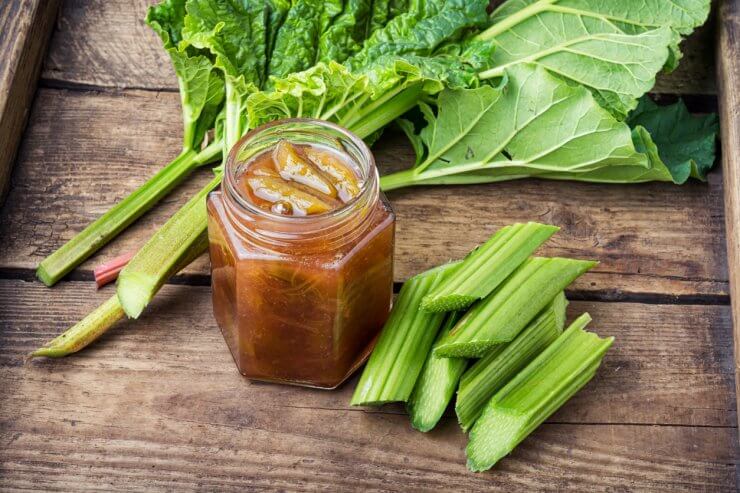
Rhubarb preserves
Once your rhubarb plants are three years old or older, you’re likely to get a hearty harvest. What to do with all those stalks?
Freeze
Wash your rhubarb stalks thoroughly and slice into 1-inch or 1/2-inch pieces, or whatever size you’ll need for future recipes. Freeze the slices on waxed paper on a baking sheet until they’re frozen solid. Then transfer them to freezer bags or airtight containers in manageable amounts, depending on what you’d like to do with the rhubarb later.
You can also freeze rhubarb with sugar. Combine one part sugar to four parts rhubarb. Let it sit until the sugar dissolves, then pack in freezer containers. You can also make a heavy sugar syrup using 4 cups of water to 2 3/4 cups sugar. Dissolve the sugar completely. If you heat it to do that, let it cool completely before you package up your rhubarb for freezing.
Frozen rhubarb will keep up to 12 months.
Can
Canning is a time-honored preservation method—and one you should only pursue if you have the right equipment. You must be careful to follow all canning directions to the letter in order to avoid botulism in your canned goods. We have a post in Food Gardening Daily that provides 10 rules to live by for pressure canning safety.
Dry
You can also dehydrate your harvested rhubarb. Slice your rhubarb evenly and spread the slices out in a food dehydrator for about six hours, or six to eight hours at 300 degrees F in the oven. An oven with a convection setting works best for this.
Dried rhubarb can be rehydrated for use in soups and sauces. You can also grind or pulverize dried rhubarb for use in soups, stews, smoothies, baking, and more.
How frequently do you harvest your rhubarb? Please tell us what you look for when getting ready to harvest and how you preserve your harvest.


 Previous
Previous

